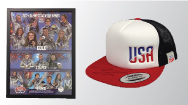Alpine Course HomologationGeneral InformationAll FIS and USSA alpine races, all events at all levels, must be conducted on FIS or USSA approved trails, referred to as homologated or registered, following inspection and favorable report. More information about FIS and USSA homologation requirements and processes may be found by following the links found the USSA web site at: //alpine.usskiteam.com/alpine-programs/officials/homologations, as can lists of valid and expiring homologations. The applicable rules appear in section 650 of both FIS International Competition Rules and USSA Alpine Competition Regulations. Clubs, areas and organizers requesting homologations should familiarize themselves with the requirements per the rules for alpine courses, including the specifications for the events to be conducted – vertical drop and width in particular. Places/venues need to determine if their interest is for FIS or USSA homologation, for which events: DH, SG, GS, SL, for full courses or entry-level/registered races (according to vertical drop). The processes, scheduling, inspection, and documentation are similar for FIS and USSA homologations - although different in some details. The application to request homologation can be found on the USSA web site at the address above. Additional information is included with the request form.
Initial steps of the homologation process include:
Once the inspector has been assigned and has contacted the responsible person at the place, the process is typically completed in the summer and autumn:
Once a course has been approved, the homologation or registration has validity limited to five years for DH and SG and to ten years for GS and SL after which reinspection will be required. In case of significant changes to a course, reinspection may be required sooner than this. All new course inspections must be made in the off-season. Reinspections, in general, can be made any time of the year. Applications received prior to the USSA meetings in May will have priority in the assignment of inspectors. When possible, FIS inspections and reporting should be completed by September 30, and USSA by October 31, so that the courses can be listed and certificates issued prior to the start of the season. The working group can not guarantee that inspections can be scheduled and homologations completed for any applications submitted after October 15. Although USSA staff, members of the Alpine Courses Working Group and other ‘key volunteers’ may communicate with a club or area about homologation needs, it is the responsibility of the club/area to initiate a request for homologation or rehomologation. Likewise, the inspector will guide and assist the club/area with the report documentation, but the area/club is responsible for its development, preparation and completion to the satisfaction of the inspector and of the FIS or USSA alpine courses chair. Reports forms in PDF format may be found on the USSA web site. The documentation (exhibits) noted on the second page of each of FIS and USSA report forms and described in the rules is an integral part and is necessary for approval. Examples of reports and documentation may be found on the USSA web site, and the assigned inspector will provide information and direction. |

